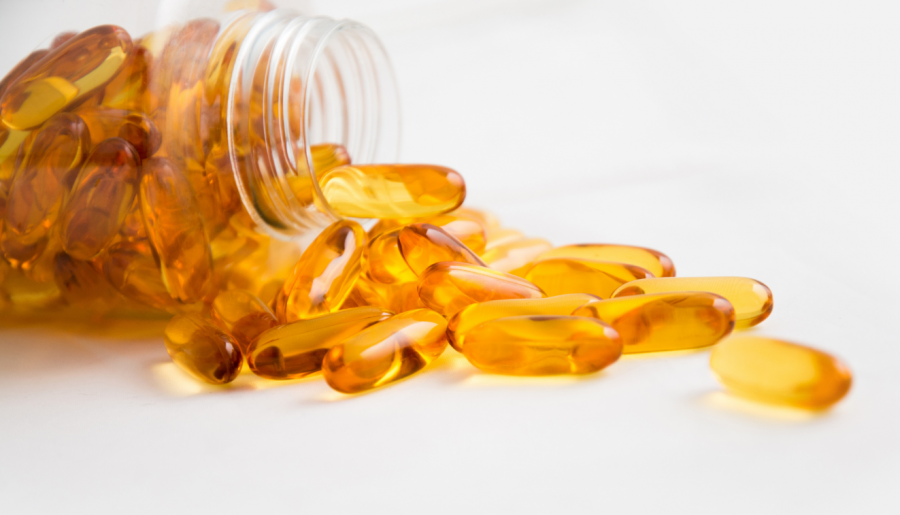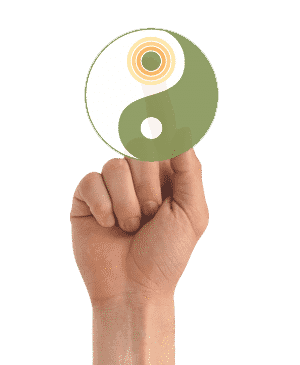Natural Treatments For Pain Relief So You Can Feel Like Yourself Again
Below is a list of the most researched natural alternatives for pain relief.
At the same time, it might be worth trying some other therapies… that aren’t backed it up with science yet. As some treatments work differently for different people…
What’s more, is that we live in an age where instant information is at our fingertips… but finding the right information can be difficult.
People have an inherent trust in scientists. We are always told to ‘trust the science’. But what if the science has been corrupted by money?
Could it be possible that some scientists are ordered from the top to come up with a preferred outcome for a clinical trial?
One that ‘debunks’ a threat to a billion-dollar industry… Who knows?
Afterall, scientists are just like us… they have mortgages, kids to feed, and a need for a secure future.
With that being said… if you see a lot of attention surrounding a natural therapy, but you can’t find enough science to back it up, it may be worth trying out anyway – after consulting with your doctor first.

.
Pain Is Often Caused By Inflammation
Pain, heat, redness, and swelling are classic symptoms of the inflammatory process.
To stop the pain, you first need to address inflammation.
Many people believe their only option is Non-Steroidal Anti-inflammatory Drugs (NSAID’s) such as Ibuprofen, Tylenol, Aleve, Celebrex, and Advil (to name a few).
But the FDA has ramped up its warnings about the risk of long-term use and NSAID’s role in causing heart attacks and strokes.
Most people don’t realize that NSAID’s come with some serious risks. It is estimated that they cause at least 16,000 deaths per year and send 100,000 people to the emergency room in the United States.
For people who take NSAID’s regularly… it might be worth looking at a natural alternative.
The downside of using natural treatments is that they may take longer before you see any noticeable results…
But the upside is that you aren’t introducing synthetic foreign compounds into your body. This reduces the risk of damaging side effects… which can affect your overall long-term health.
Here are some clinically proven herbal remedies that were chosen, based on herbal medicines currently available in the United States and commonly recommended by online search engines.
Curcumin
Curcumin, the active compound found in turmeric, has long been used as an anti-inflammatory treatment in traditional Chinese and Ayurvedic medicines.
Several studies have evaluated the efficacy of turmeric extracts for the treatment of musculoskeletal disorders.
Some common musculoskeletal conditions are osteoarthritis, back pain, rheumatoid arthritis, fibromyalgia, osteoporosis, gout, polymyalgia rheumatica, lupus and ankylosing spondylitis.
One study discovered that curcumin has similar effects to a popular osteoarthritis (OA) drug – diclofenac… and showed better tolerance among patients with knee OA. The study concluded that “curcumin can be an alternative treatment for patients with knee OA who are intolerant to the side effects of non-steroidal anti-inflammatory drugs.”
Consuming curcumin by itself has poor bioavailability, due to poor absorption. However, there are different additives that can increase bioavailability. For example, piperine is the major active component of black pepper and, when combined in with curcumin, has been shown to increase bioavailability by 2000%.
Curcumin has been approved by the US Food and Drug Administration (FDA) as “Generally Recognized As Safe” (GRAS), and good tolerability and safety profiles have been shown by clinical trials, even at doses between 4000 and 8000 mg/day and of doses up to 12,000 mg/day.
Extra citations for curcumin clinical trials:
Efficacy and safety of Curcuma domestica extracts in patients with knee osteoarthritis
Omega-3 Fatty Acids (fish oil)
Fish Oil – Research has shown, people who suffer from inflammatory diseases, such as arthritis, may benefit from eating fish or taking an Omega-3 fatty acid supplement. For best results, if you take it in supplement form, choose one that comes from a cold-water fish.
Multiple studies have shown great results… one study reported similar results to the painkiller ibuprofen… stating: “fish oil supplements appear to be a safer alternative to NSAIDs for treatment of nonsurgical neck or back pain.”
Another research paper studying the effects of fish oil for for neuropathic pain reported: “patients had clinically significant pain reduction, improved function as documented with both subjective and objective outcome measures up to as much as 19 months after treatment initiation. No serious adverse effects were reported.”
A long-term double-blind, controlled study testing the Long-term effect of omega-3 fatty acid supplementation in active rheumatoid arthritis also reported: “Daily supplementation with 2.6 gm of omega 3 results in significant clinical benefit and may reduce the need for concomitant antirheumatic medication.”
However, you must be aware that studies have shown there may be possible side effects from taking fish oil supplements.
There have been some cases, where fish oil has been linked to an increased risk of the blood’s inability to clot.
This could pose a health risk if you’re taking medications that affect your blood.
It also been known to interact with blood pressure medicines, and it may cause blood pressure to drop significantly.

.
Capsaicin
Capsaicin, the pungent ingredient in chili peppers, produces intense burning pain in humans.
Paradoxically, capsaicin has long been used as a painkiller.
The development of topical patches and injectables containing capsaicin has led to clinical trials to treat chronic pain conditions… such as neuropathic pain and the potential to treat osteoarthritis.
One study approved capsaicin as a topical treatment for neuropathic pain… with the pain killing effects lasting for several months after a single treatment.
Anther study’s results suggests that a single injection of capsaicin provided long-lasting pain relief for neuropathic pain.
This has led to more research into topical capsaicin as a treatment for multiple painful conditions.
Thunder God Vine
Native to China and Taiwan, thunder god vine appears to have anti-inflammatory and immunosuppressive properties.
Also known as Tripterygium Wilfordii Hook F, extracts of this vinelike plant have been widely used in Asia to treat patients with a number of autoimmune diseases.
Although most of the research for this herb has come from uncontrolled trials… one placebo-controlled double-blind trial has clearly demonstrated positive results for rheumatoid arthritis.
The results showed that extracts of Tripterygium wilfordii Hook f suppress both immune and inflammatory responses.
Feverfew
The feverfew herb has a long history of use in traditional and folk medicine, especially among Greek and early European herbalists.
Feverfew (Tanacetum parthenium L.) (Asteraceae) is a medicinal plant traditionally used for the treatment of migraine headaches, rheumatoid arthritis, stomach aches, toothaches, and problems with menstruation and labor during childbirth.
Clinical research has reported that Feverfew flower extract behaves as a potent pain reliever for inflammatory, articular and neuropathic pain.
Studies showed significant painkilling, anti-inflammatory activities, which confirmed the folk use of feverfew herb for treatment of migraine headache, fever, and arthritis.
Bromelain
An extract from the pineapple plant, has been demonstrated to show anti-inflammatory and pain killing properties. Compared to conventional drug treatments, can provide a safer treatment for osteoarthritis.
Boswellia
This ancient herb has been used as a pain reliever for centuries. This herb, known as Boswellia Serrata, grows in India.
The pain-relieving compound in boswellia is known as the boswellic acid, and It’s an anti-inflammatory agent that can be used in a cream for topical pain relief or taken internally in capsule form.
Its benefits are those much like of an NSAID (non-steroidal anti-inflammatory agents), which are frequently prescribed to treat pain.
However, unlike the NSAIDs, the boswellia extract can be used for extended periods of time, without causing stomach problems. This herbal supplement can be found at most health food stores.
A clinical trial conducted by Raychaudhuri and co-workers in India has shown that the extract of the plant, Boswellia serrata, can reduce pain and considerably improve knee-joint functions, in some cases providing relief even within seven days.
Devils Claw
Devil’s Claw is native to parts of South Africa, where it is thought to have been used to treat arthritis for centuries.
Two active ingredients called Harpagoside and Beta sitosterol are found in devil’s claw which have been shown to possess excellent anti-inflammatory properties.
Devil’s Claw is claimed to be beneficial for treating arthritis, rheumatism, arthritis and diseases of the liver, kidneys, gallbladder and bladder.
One 4-month study of 122 people with knee and hip osteoarthritis compared devil’s claw and a leading European medication for arthritic pain relief.
The people who took devil’s claw had as much pain relief as the people who took the medication. Those who took devil’s claw had fewer side effects and needed fewer pain relievers throughout the study.
Cats Claw
Cats claw has been used for over 2000 years by the indigenous peoples of South and Central America to treat rheumatic disorders.
Ingredients appear to act as anti-inflammatory, antioxidant and anticancer agents.
Research has also indicated cats claw may help in the treatment of osteoarthritis: “Pain associated with activity, medical and patient pain scores were all significantly reduced, with benefits occurring within the first week of therapy.”
Butterbur
The use of butterbur to treat ailments can be traced back to the Middle Ages when it was used to fight the plague. Today it’s most commonly used to treat migraine headaches.
Butterbur is an effective preventive treatment for migraine
Doses of at least 75 mg twice daily seem to be necessary for best results. Lower doses of 50 mg twice daily may not be effective in adults.
Over 4 months of treatment, in the per-protocol analysis, migraine attack frequency was reduced by 48%.
White Willow Bark
White Willow bark has been used for hundreds of years for pain relief, and as a fever reducer. The active extract found in the bark, is called salicin. Salicin works much like aspirin and is a chemical derivative of salicylic acid.
This natural salicylic acid is as effective as aspirin at relieving pain.
Even better, the compound salicin, from the white willow, does not cause the intestinal upset or bleeding… as aspirin sometimes does. This is because the salicin from the white willow doesn’t block the prostaglandins in the stomach or intestines.
Studies show that white willow bark can be a useful and safe treatment for low back pain.
Glucosamine and Chondroitin
These are some of the most common alternative supplements for arthritic pain relief.
Glucosamine and chondroitin protect cells called chondrocytes… which help maintain cartilage structure.
These supplements have the potential to slow cartilage deterioration in the joints, and to reduce pain in the process.
However, there is one thing to keep in mind, all forms of glucosamine originate, and are extracted from, shellfish. So, if you are allergic to shellfish, you may want to consult with your doctor before using it.
Vitamin D
A recent peer-reviewed report from Pain Treatment Topics found that the administration of Vitamin D may provide relief for up to 95% of patients suffering from back pain.
Vitamin D is naturally made by the body when your skin is exposed to sunlight. Many different things can cause a deficiency, including limited exposure to sunlight, sunblock, protective clothing, and age.
Stewart B. Leavitt, MA, Ph.D., and author of the report stated, “our examination of the research, which included 22 clinical investigations of patients with pain, found that those with chronic back pain almost always had inadequate levels of vitamin D.
When sufficient vitamin D supplementation was provided, their pain either vanished or was at least helped to a significant extent.”
The study stated that inadequate vitamin D intake could result in a softening of bone surfaces, or osteomalacia, which causes pain.
The lower back is a focal point for this pain. In one study of 360 back pain sufferers, 95% were found to be deficient in the vitamin.
As far as the dose of vitamin D that should be taken to help relieve the pain… it is recommended that up to 2000 IU or more be taken. The current recommended dose is only 600 IU. Make sure to check with your doctor for your personal recommended treatment and the safety of starting the supplement.
Acu-therapies For Pain
Research into acu-therapies as a medical treatment has grown at twice the rate of research into conventional biomedicine.
Over the last 20 years, there have been over 13,000 studies conducted in 60 countries, including hundreds of meta-analyses summarizing the results of thousands of human and animal studies (animal studies are important because they debunk the placebo effect).
A wide-variety of clinical areas have been studied, including pain, cancer, pregnancy, stroke, mood disorders, sleep disorders and inflammation, to name a few.
Acu-therapies like acupuncture and acupressure are the basis of Traditional Chinese Medicine (TCM).
The term “acupoint” refers to specific spots dotted along the body, all of which are highly reactive to stimuli. These are the same points used by acu-therapists for treating chronic pain.
The Chinese characters for acupoint describe them as “gate-ways” or “openings” where Chi can be accessed and influenced.
“Qi” (pronounced ‘chee’), also known as “life force”, “energy flow”, and “universal energy” is the energy force that supports all life. The Japanese call it “Ki”, Gurus of India call it “Prana” and some Polynesian cultures call it “Mana”.
“In every culture and in every medical tradition before ours, healing was accomplished by moving energy” – Albert Szent-Györgyi (1937 Nobel Prize for Medicine Winner).
Qi circulates through energy lines that run along your body… called the meridian system. This maintains our physical and mental health.
Should Qi slowdown in one or more of our meridian lines, or if there is an energy blockage… an energy imbalance will occur. And if not treated, pain, illness and disease can manifest.
To remove energy blockages and to improve the circulation of Qi… TCM therapists stimulate acupoints.
Stimulating specific acupoints is like pushing a ‘reset button’ – especially for pain.
In TCM, each of the classic points has a Chinese name, which in some way describes the function, location and character of the acupoint. In modern times, acupoints have been given a simpler alphanumeric code.
What’s the difference between acupuncture and acupressure?
Most people have heard of the miraculous effects of acupuncture… but many are not aware of acu-pressure.
This ancient healing art is based on the same principles as acupuncture, but instead of sharp needles, manual finger pressure is applied to acupoints.
Historically, acupressure pre-dates acupuncture.
When acupressure treatment was first developed, they did not have the technology we have today to make needles. Instead, they used their fingers, bones or stones to apply pressure to specific acupoints.
Acupressure at home
For many people, the thought of being stabbed with needles (or electric needles) creates some anxiety… even when they know the therapy is in their best interest.
For others, the cost of the procedure, combined with the hassle of commuting to a clinic makes people put their appointment off… and never get around to trying it.
But now, advancements in technology have opened the door for people to be able to treat themselves at home – with step-by-step acupressure techniques.
Combined with a type of sound therapy… using digital recordings of therapeutic tuning forks.






